
Sheep’s Wool Insulation
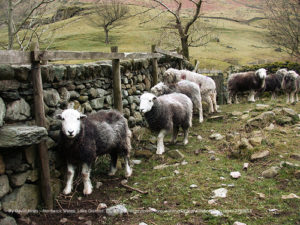
Welcome to Sheep’s Wool Insulation: The Energy Efficiency Podcast – episode 11, the podcast that brings you a mix of energy efficiency news, products and tips all year round. We’re interested in profiling people and products involved in promoting energy efficiency habits, products and information, so please do get in touch if you have something to contribute.
This week: grants for energy efficiency works – what’s available to help you make your home cosy for winter? Sheep’s wool insulation – the whys and wherefores, and energy efficiency in business – how to improve your offering while saving money.
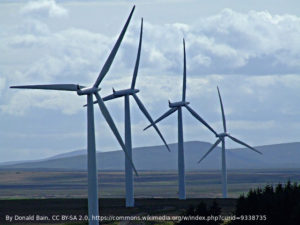 Power failure
Power failure
But before we get on with our advertised features, at the end of last week parts of the UK experienced a total power failure. As well as homes left without power, hospitals, airports, trains and traffic lights were affected.
The lights went out because two power stations failed within minutes of each other. One was a gas plant, the other a wind farm, which together produce 5% of our electricity. This was grist to the mill of those who oppose wind farms, but the problem was not, as has been reported by some outlets, that there was “too much wind” or indeed its opposite, not enough wind. The gas powered plant shut down in response to a technical issue. Automatic systems reduced power output significantly at the wind farm.
Part of the issue is that the National Grid is not prepared for power failure on this scale. However, safety systems operated as they should have. Power services to the vast majority of the country were maintained. These safety systems will come under review as part of an investigation into the causes of the blackout. Until it reports back there’s nothing to be gained by speculating on the causes of the blackout, although the National Grid has already ruled out a cyber attack.
Swift reconnection
The power outage had so much impact as it happened at rush hour on a Friday in August, but many of those affected were reconnected within 15 minutes. A power failure on this scale hasn’t happened in over a decade. The National Grid CEO pointed out that the UK has “statistically one of the most reliable energy networks not only in Europe but anywhere in the world.”.
He puts this down to massive investment from the energy industry in distribution and transmission networks over the last 30 years. Despite this, the National Grid could face a fine for a power outage on this scale.
Grants for energy efficiency works
We’ve mentioned grants a couple of times in past episodes, so we thought it was time to look at the detail. What can you, as a householder, access to improve the energy efficiency of your home? It depends on where you live and your circumstances. Many local authorities and groups run their own funding systems. Eligibility can depend on age, status as a homeowner, private tenant etc, and income.
Complex
Identifying precisely what any given household might be eligible for can be complex. For example, in Scotland loans of nearly £40,000 are available to owner-occupiers and private landlords for all sorts of improvement works including connection to a district heating network. Those struggling to pay for heating their home can access the Home Energy Efficiency Programmes for Scotland and the Warmer Homes Scotland Scheme. There’s support for tenants, and for people installing renewables. Choose.co.uk describes the system as complicated and suggests contacting the Energy Savings Trust’s partners to check eligibility.
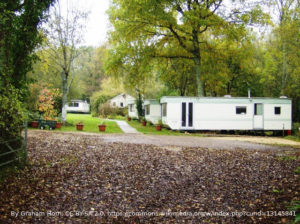
The Warm Home Discount scheme is run by the government. Strictly speaking it isn’t for home improvements, but is a discount on your electricity bill between September and March. If your electricity supplier also provides you with gas you can get a discount on your gas bill instead. The scheme ran last year and opens to new applicants in October 2019. To qualify you need to be receiving the Guarantee Credit element of Pension Credit, or if you’re on a low income and meet your energy supplier’s criteria for the scheme. It applies to pre-payment meters as well as billed customers. If you live in a park home the system operates differently and you’ll need to download a form from the government website.
ECO
The energy suppliers have an obligation to help those in certain population groups through the Energy Company Obligations (ECO) scheme. If suppliers fail to reach these groups they face fines, so there’s an incentive to offer freebies. Currently offers are in place under ECO3, which lasts until spring 2022. The focus of ECO is insulation but can include double glazing and solar panels. Under ECO3, local authorities can use “ECO Flexible Eligibility” to set their own criteria for eligibility for funding.
Boilers and insulation
Offers can take the form of boilers and insulation. It tends to be available to people on certain benefits and on incomes of less than about £16,000. Boiler grants tend not to be available to housing association or council tenants. Contact your energy provider to check eligibility. Again approach your energy provider about cavity wall insulation. E.on, EDF and Npower all run insulation schemes. EDF allows 10 weeks to complete works, which from today takes us to late October, so start that ball rolling if you think you’re eligible. Be aware that cavity wall insulation isn’t suitable for all properties so be sure to look into the specifics for your house. Note too that some suppliers might charge for erecting scaffolding, or removing old insulation. Money Saving Expert.
The Affordable Warmth Obligation is part of the ECO. It operates in England, Scotland and Northern Ireland to provide assistance to improve the energy efficiency of a home. In Wales a similar scheme called Nest is run by British Gas. Again the focus is boilers and insulation although in some cases it could involve an entirely new central heating system. This scheme is open to private tenants or home-owners on benefits, and social tenants in homes with an energy efficiency rating of E, F or G.
Support
Locally, many services are available that help residents identify grants they might be eligible for. Support is available to wade through complex applications processes. These schemes usually offer energy saving advice as well, and help with dealing with fuel poverty and bill arrears.
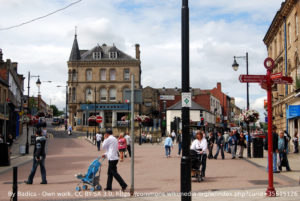
Some schemes offer help on the basis of health needs. Since March this year Better Homes Barnsley will work with Warm Homes and Hospital Discharge Team to assess eligibility. Residents benefitting from this programme will be able to access the Barnsley energy tariff. This is a local offer from Great North Energy.
Agencies working together like this should mean those with the greatest medical needs will be in warm and affordable energy efficient homes. Generally referrals will come from health professionals and council workers, but people can self-refer. Barnsley has about 11,500 households in fuel poverty and above average rates of excess winter deaths. The scheme is funded by surplus from Berneslai Homes, the council’s housing company.
So it looks like the main source of potential funding for the average householder is through ECO3. Eligibility is complex and usually benefits-related, so you need to contact your energy provider to look at the details. If you’re planning on having cavity wall insulation check that your house is suitable. If you need advice on what’s available or help sorting out bill problems, your local authority is likely to run an advice and referral service.
Sheep’s Wool Insulation
I wonder how many of the households applying for the schemes we’ve just looked at will be offered sheep’s wool insulation? We looked at this in our feature on energy efficiency in self build in episode 5.

We learnt that sheep’s wool is not only insulating but provides a sound baffle and acts as a moisture buffer. It can absorb up to 25% of its own weight before thermal efficiency is affected. In a timber-framed house this can protect the frame from damage. In the damp UK this is a significant consideration. Wool has an insulation value unmatched by any other material, according to the website Sheepwoolinsulation.com, which provides sheep’s wool insulation to the building industry. Sheep’s wool insulation has been used in one form or another for generations.
Prices for sheep’s fleeces, the raw material, have been very low in recent years, so given the work involved in processing and marketing them they just haven’t been really valued. This is changing now, with wool being promoted for insulation but also for all sorts of other products including duvets and coffins.
Environmentally-conscious choice

Sheep’s wool sounds a good option for the environmentally conscious all round. The sheep would be shorn anyway and don’t suffer. It takes less energy to produce sheep’s wool insulation than other types, and some projects use locally-sourced wool to keep the miles down.
What is it about sheep’s wool? It’s its naturally wavy structure. This traps loads and loads of air bubbles, which is what reduces heat and sound moving through. Not only does it keep you warm in the winter, but it keeps you cool in the summer.
Sheep’s wool insulation can be used like regular insulation. It comes in all sorts of shapes and sizes and rools and slabs. You don’t need to take precautions fitting it as it doesn’t irritate the skin like other forms of insulation. It traps pollutants and chemicals in the air, so as air passes into your home it’s purified.
The process
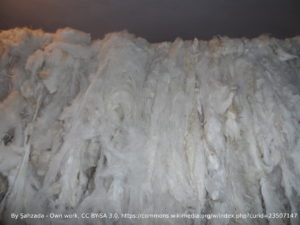
Producing insulation takes just a few steps. First the wool is sorted into colours by the farmer. White fetches a higher price as it can be dyed more easily. The wool is then packed into bales containing over 400kg of wool. This minimises the cost and energy of transportation to the washing plant. At the washing – or scouring – plant the wool is blended to particular specifications. It’s then washed to remove all dirt, grass and so on and lanolin. The resulting raw fibre is covered with something called Ionic Protect.
Once the wool’s dry it’s carded to get all the fibres running in the same direction. Fibres are layered to get the required thickness. These are mechanically bonded. Lastly the rolls are wound and packaged.
Some types are mixed with polyester fibres. If you want a 100% natural product shop around and make sure any product you’re considering meets fire regulations. You can use sheep’s wool alone or combined with other products, and fit it anywhere in the house.
Is wool flammable?
Another of sheep’s wool’s benefits is that it has a high ignition temperature. If that temperature is reached, the wool with only char. Even this can be improved by adding a little Borax.
Thermal conductivity is measured in Watts per meter-Kelvin or k-value. Sheep’s wool has a thermal conductivity of between 0.035 – 0.04 W/mK, where as typical mineral wool has a thermal conductivity of 0.044 W/mK . That makes sheep’s wool about 10 times better at insulation. You will pay a bit of a premium for sheep’s wool insulation but it’s worth it.
Energy efficiency in business
In our features on energy efficiency in its many forms and across sectors, it’s come up again and again that businesses can reap serious benefits from improving energy efficiency. Leisure venues have improved the customer experience by saving money. In health more patients can be seen in a smaller building. In education students can learn in much more comfortable surroundings as settings shut down older, less efficient and more expensive-to-run buildings.
Government advice
The government estimates that an SME can reduce its energy bill by up to a quarter with payback of under two years by installing energy efficiency measures. It reckons 40% of these savings would require zero capital cost. The government has produced a PDF download to advise SMEs on energy efficiency. We’re taking most of our case study references from that PDF. It’s interesting and comprehensive so why not follow the link, download it, and read it on the train home?

Recently Mark Carney, Governer of the Bank of England, warned that companies that fail to adapt to climate change will simply go out of business. He also noted that a great deal of money would be made along the way. At the same time the CBI has complained that government isn’t doing enough to encourage businesses to be more sustainable.
You run a business, you want to save money and energy, where do you start?
Of course this depends on the type of business you run, the size and reach of your operation and so on. Just as for domestic energy efficiency works, there are grants available. West of England Green Business Grants helps SMEs improve energy efficiency with cashback grants to cover up to 40% of eligible costs. Free energy surveys are also available. These works focus on improving the energy efficiency of a building. That covers lighting, insulation, heating and windows. Money is available too for acquiring more energy efficient equipment.
In our feature on energy efficiency in leisure this came up a few times. Replacing inefficient air conditioning unit increased visitor comfort, saved money and allowed for closer control of the temperature. There is always an environmental footprint to pulling out old equipment, but if old kit is very problematic or has reached the end of its useful life, upgrading with a much more efficient alternative will reap benefits.
Consuming far less energy doesn’t just keep bills down in the short term; it helps to protect companies against energy price rises in future. Newer more efficient kit should require less maintenance, suffer less downtime (which means less hassle) and serve your business for many years.
Fix problems
If you don’t want or need to replace an entire system or machine, check plant for any problems. A small printing machine manufacturer identified nine leaks in its compressed air system. By fixing them it’s saving well over £1000 a year and reducing its carbon footprint by 7 tonnes. Could you extract more from your current set-up? A vehicle repair and maintenace firm recovered heat from a compressor to warm its painting bay in winter. It saved nearly £1000 and 3.7 tonnes of CO2.
Heating
In that feature we also looked at heating bills. As in a leisure centre, most businesses could turn the heating down and reduce the time it’s on without staff or visitors noticing. Team that with improving insulation and glazing in a premises. Office layout can affect how warm people feel. Take a good look at how heating systems work and where heat is delivered in your building, and look at what can be done to make improvements, including if necessary moving the thermostat. Thermostats in the wrong place are responsible for an awful lot of unnecessary boiler uptime. The Chinese Contemporary Arts Centre in Manchester fitted a £100 timer and is saving nearly £4,500 per year and keeping over 17 tonnes of CO2 out of the atmosphere.
The PR case
There’s also a PR case for improving energy efficiency, both within and without your company. A prospective employee will usually be more attracted to a warm and well-functioning workplace than its draughty, clunky alternative. You’re more likely to attract the best staff, hang on to the them and see them take fewer sick days. To the outside world your business looks like it understands what’s going on in the world and cares about it. You might win more contracts.
Generating energy

If you have appropriate roof space, why not fit solar panels? In our recent feature on solar power we learnt that fitting PV panels to commercial buildings in the often cloudy and wet UK alone would produce at least 60% of the energy used by business. In the Netherlands a logistics warehouse in Tilburg sports 13000 solar panels on its roof. They produce enough power for all the operations at that site (just one of a whopping 660 owned by the parent company Rhenus, a logistics firm) but also powers about 750 homes from the excess power it generates.
The building currently holds the highest-ever BREEAM rating for an industrial building. The building is airtight and uses electric heating boilers only about 10 days a year, in the very coldest weather. Enormous windows let in lots of natural light which has reduced energy use for lighting by 70%. This building pays attention to detail. Rainwater is collected on the roof and used to flush loos. With over 30000 employees worldwide that sort of measure could make quite a difference. Imagine doing that in rainy Britain? In fact, why don’t we?
Alphons van Erven, senior VP of Rhenus, believes that eventually all companies will be forced by government to use these sorts of methods. Perhaps this is what the CBI had in mind? If governments worldwide charge companies for their carbon footprint, then the business already achieveing net zero won’t face these costs. However, works that increase the value of a business setting will also increase its business rates. The CBI wants to see government addressing this type of issue.
Transport
It’s not just heating and lighting costs businesses face. Transport is a biggie for many businesses. In Scotland, interest-free loans of up to £120,000 are available to help Scottish businesses lower their transport and travel costs by using low carbon alternatives. These loans cover electric and hybrid vehicles including HGVs and motorbikes and scooters, and telematics systems. Interestingly it also covers video-conferencing costs. It’s going to be vital to rethink how we communicate and when we really need to travel, as well as considering how to do it in a less carbon-heavy way.
Some change in habits and employee education or training makes a big difference to the success of energy efficiency measures. This is particularly so if a premises makes big changes and if many staff have been in place for quite a while. Making a big point of including staff in consultation and decision-making will have a sizeable effect on the success of the measures any firm takes.
Small measures
Small measures make a difference too. An engineering firm set up a Switch Off campaign to make sure all staff turned off computers at the end of the day and at weekends. It saved £600 a year and 3.5 tonnes of CO2. That’s a perfect no-cost money saving move. Staff leisure facilities should be looked at too. Kitchens are an area where savings can be made through encouraging good habits and making sure equipment is energy efficienct, used sensibly, and well-maintained. A market reserch company, DJS Research, has used timer switches to turn off its water coolers at the weekend. It’s saving nearly £150 a year and the devices paid for themselves in a month.
Almost without exception every business can make some improvements. Large-scale works might be eleigible for a grant. Many changes can be made with no or very low investment. Some improvements just need a slight shift in habits. Every time your company looks to make any change see what can be done to make energy efficiency improvements as part of that process. Talk to businesses of a similar size, sector or location to see how they’ve improved their carbon footprint, brought down bills and put in place a spot of future-proofing. And download that PDF.
What are we up to?
We’ve been researching the options for having vinyls cut to cover the Petflap. Some customers don’t want black, so we’re looking at providing white vinyls, and maybe even custom options. Remember we ship worldwide and now have a new improved cart that makes it all much easier.
Thank you for listening to episode 11 of the Energy Efficiency Podcast. Until next time you can find us on both Twitter and Instagram as Ecoflap, and on Twitter we also tweet as The Petflap. In next week’s episode we’ll look at BREEAM, the health benefits of energy efficiency, and mending household items.
Music credit: “Werq” Kevin MacLeod (incompetech.com)
Licensed under Creative Commons: By Attribution 3.0 License
http://creativecommons.org/licenses/by/3.0/
